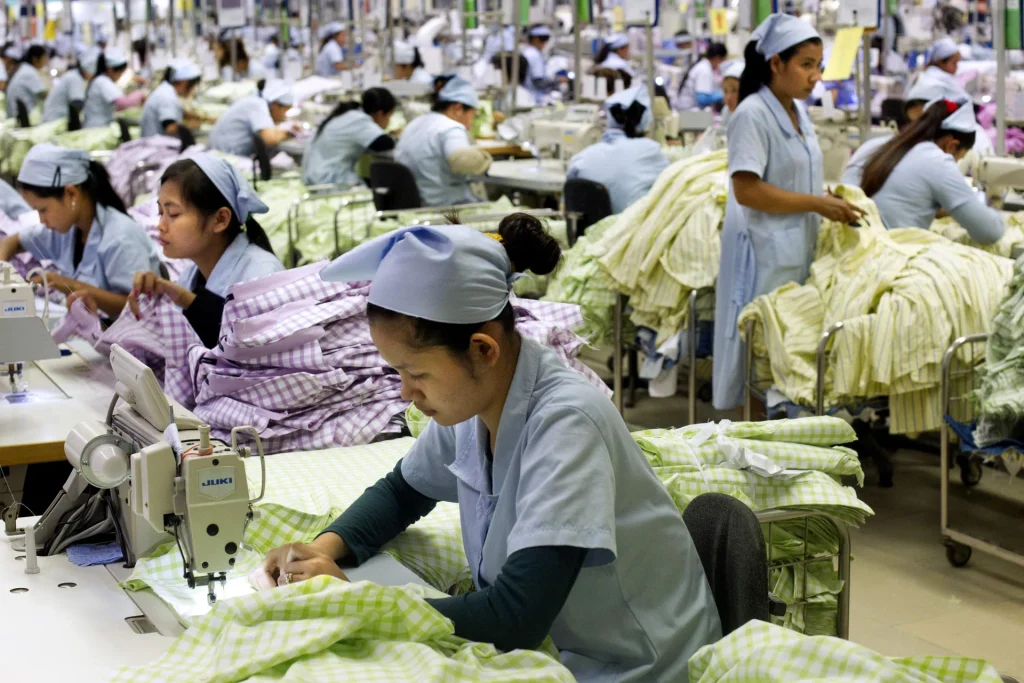THE South-east Asian fashion sector is projected to reach US$57.5 billion by 2027, and is set to outpace the rest of the Asia-Pacific region by 2031. This development offers an immense growth opportunity for brands in this region. However, this promising trajectory is not without its complexities.
On the one hand, intensified competition from the aggressive expansion of Chinese fashion brands means South-east Asian players must pivot from competing on price to other strategic levers, such as technological innovation.
On the other hand, the global apparel waste crisis is escalating, with an estimated 92 million tonnes of textiles headed for landfills. South-east Asia’s booming fashion sector will inadvertently contribute to this problem, and there will be an expectation for these brands to act on reducing their negative impact.
Meanwhile, looming sustainability laws in the United Kingdom and European Union – with 16 fashion and textile Bills already on the table in the EU by late 2023 – will impact the way brands source, trade and sell in the future. This will result in a greater demand for transparency across the supply chain.
With 53 per cent of Asian consumers considering trust a crucial factor when deciding to engage with a brand, this means South-east Asian companies must now confront an outsized expectation that necessitates a new consumer engagement playbook rooted in trust.
Rather than anxiously watching these developments and market dynamics unfold, brands in the region have a clear opportunity. They can authentically forge consumer trust while navigating regulations and forging a distinctive competitive advantage by proactively embracing three core principles.
A NEWSLETTER FOR YOU

Friday, 8.30 am
Asean Business
Business insights centering on South-east Asia’s fast-growing economies.
1. Embrace measured transparency and innovation
For South-east Asia, one of the regions most vulnerable to climate-related change and disaster, sustainability is no longer optional, but necessary. Rampant overconsumption, escalating textile waste, and environmental pollution are issues increasingly scrutinised by governments and society alike.
Businesses are trying, but public scepticism towards green claims is growing. In Indonesia, for instance, data and analytics company YouGov found that only 32 per cent of consumers fully trust sustainability logos.
To rebuild this broken trust, brands must move beyond claims and demonstrate verifiable action to address sustainability challenges specific to their business and industry.
Take textile waste as an example. It is not solely an environmental issue, but one intertwined with social and economic factors. Textile waste needs precise sorting. Efficient, cost-effective and accessible textile waste management requires a concerted effort across the value chain – one that involves partnering innovators, adopting advanced sorting technologies, and driving public education.
South-east Asian fashion brands can leverage artificial intelligence-enhanced near-infrared spectroscopy, which identifies the unique “fingerprint” of fibres, enabling rapid and accurate sorting by fibre type, colour and structure, which is crucial for effective recycling.
For example, Uniqlo’s partnership with Supercircle, a technology and reverse logistics company specialising in textile recycling, launched an initiative to let customers give their unwanted clothes a second life.
Investing in such innovation and publicly sharing progress, even challenges, signals transparency over perfection, and indicates accountability.
2. Leverage data and intelligence for authentic connection
WGSN’s Future Consumer 2027: Emotions report forecasts that “resilient adaptation” will be a key emotion and coping mechanism in reaction to eco-anxiety and climate dread. The term refers to an emotional state marked by a combination of helplessness and a strong will to act.
With consumers grappling with climate-related feelings of vulnerability and powerlessness, brands need to help them move towards a sense of trust, safety and confidence by offering genuine, verifiable solutions and promoting a sense of shared progress.
This is achieved by leveraging data and intelligence to provide tangible evidence of their efforts. Consider, for example, data-driven mapping and tracking of post-consumer textile waste.
South-east Asian textile recyclers and innovators can leverage tools such as World of Waste to map global textile waste hot spots and understand waste volumes and compositions.
“With consumers grappling with climate-related feelings of vulnerability and powerlessness, brands need to help them move towards a sense of trust, safety and confidence by offering genuine, verifiable solutions and promoting a sense of shared progress.”
This not only helps turn waste into valuable resources and accelerates the shift towards a more circular fashion industry, but also anchors their actions on a global database.
Another powerful tool is the digital product passport, which offers consumers one-click access to verify material origins and view a product’s life cycle, from production to distribution and end-of-life.
These tools provide the means to transition from superficial claims to addressing consumer anxieties and aspirations through concrete, verifiable data.
3. Involve consumers in innovation and sustainability efforts
“New independents”, a segment of consumers identified in WGSN’s analysis, are emerging. They take a vigilante approach to disinformation and prioritise facts and expertise. For this group, trustworthy information and verifiable authenticity are non-negotiables.
The current reliance on traditional, formal disclosures is no longer resonant, and will increasingly limit brands’ social licence to operate, especially in the face of this new form of consumer scrutiny.
To that end, “show, don’t just tell” is increasingly adopted as a principle in how brands involve consumers in their sustainability and innovation journeys. Displaying transparency in the brand’s operational and creative processes helps dismantle negative biases and cultivates a deeper sense of trust.
For instance, showcasing handcrafted processes and the use of local materials – as brands like Bluesville have done by educating consumers about their sustainable practices and artisanal craftsmanship – positions them as trustworthy.
Actively involving consumers and prioritising authentic storytelling over traditional endorsements build a foundation of trust that is both enduring and rewarding.
The path forward for South-east Asian fashion brands demands a renewed commitment to trust. This is shown through measured transparency, data-driven innovation, and direct consumer engagement in the sustainability journey.
Only then can they hone their competitive edge, solidify their leadership, and truly thrive in this dynamic and ever-changing market.
The writer is vice-president, Asia-Pacific, at WGSN


